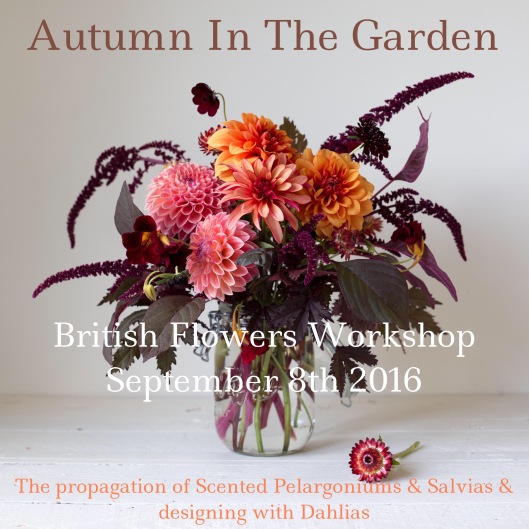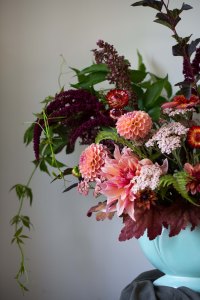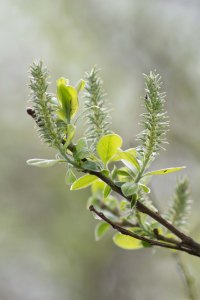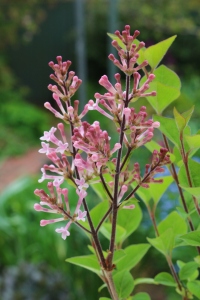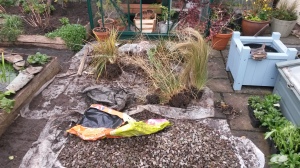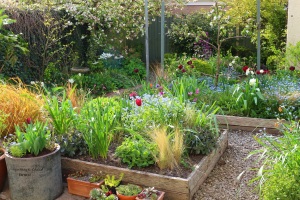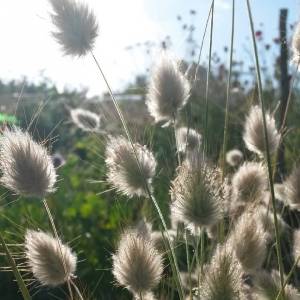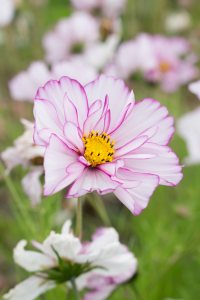
Rochdale Canal, Hebden Bridge ©Ian Curley
What would you do if your home, your business and your allotment were deluged by water? I’ve been incredibly lucky to never experience this kind of flooding, so I can only imagine how devastating it would be to hear the sirens signalling the imminent threat of flooding, to watch as streets became rivers and to see the flood waters rise. On Christmas Day night and Boxing Day this is what many in the north of England were faced with as the rain kept on falling. There had been floods earlier in December in Cumbria and there have been more since, particularly in Scotland, but when it hits somewhere you know and love, when it threatens family and friends, it takes on another dimension.
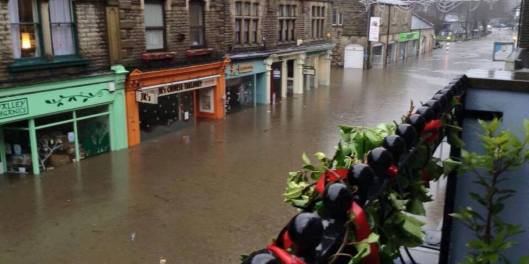
Market Street, Hebden Bridge, with kind permission of Helen Baron. Taken from above her shop Ribbon Circus which was damaged in the floods.
The Calder Valley sits below a stretch of the Pennines in West Yorkshire. Wellyman grew up here, we were married here and it’s somewhere I’ve come to think of as my adopted home. I love its stunning, rugged beauty, the fantastic market towns and great community spirit. Then the rain came, the rivers swelled and the flood waters rose. This is an area accustomed to a degree of flooding; the topography, a steep-sided valley with rivers running through it, makes it somewhat inevitable, but what happened this Christmas was beyond anything that had been seen before. At one point, in the main streets of Mytholmroyd the water was as high as the shop signs above doors and windows. It inundated homes and businesses, damaged bridges and lifted road surfaces. It would be one thing if this was clean water but it isn’t, it’s full of whatever it has swept with it – debris, mud and, worst of all, sewage from the overwhelmed sewers. It has been heart-breaking to see the footage of the destruction the floods have caused.
For some time now the market town of Hebden Bridge has been a beacon for independent shops and has gained a reputation for its quirkiness, profusion of organic shops and ethically sourced products. We make a bee-line for the town whenever we’re in the area. Many of us decry the loss of the nation’s high streets and the homogenisation of shopping due to out-of-town developments and massive superstores. Hebden has been a model for what a town can be, a thriving community with an eclectic mix of small businesses supporting the local economy. Whether it’s the food shops which supply local produce, the independent bookshop, the art and crafts supplier and the whole host of galleries, clothes and gift shops, this is a place where shopping is a pleasurable experience. I normally can’t stand the prospect of having to go shopping, the thought of fighting through the crowds and being blasted by loud music mean I spend as little time in shopping centres as possible. Hebden is so different. I could happily spend a whole day pottering around here, having a delicious lunch and then a wander by the canal or up to Hardcastle Craggs, a local beauty spot. Then there’s the Hebden Bridge Picture House one of the last surviving civic-owned cinemas in Britain and the Little Theatre Company formed in 1924. This is a town which celebrates creativity and community.

The Snug Gallery, Hebden Bridge ©Ed Chadwick
One of these businesses is the Snug Gallery run by Ed Chadwick. Ed is a photographer who has created a highly regarded gallery which showcases incredibly talented artists from across the country, including his partner Jill Shaddock’s beautiful ceramics. On Boxing Day Ed and his partner Jill faced the triple whammy of having their home and their business deluged, and their allotment washed away.
What do you say to people who have had their world turned upside?

The Snug Gallery prior to the floods, Hebden Bridge ©Ed Chadwick
Wellyman and I met Ed last summer; I think it might have been raining then too. A mutual friend, Sarah, knew we were in town and said we should pop by the gallery and say hello. Her text went something like, ‘He has an incredible allotment, you’ll have lots to talk about’. And we did. Ed showed us photos of his plot on Instagram, we chatted about potato varieties and our dahlia obsessions. Later that day, after a walk by the canal we took a wander past Ed and Jill’s allotment. It was stunning, not just an allotment but their garden. Now it’s all washed away.

Ed and Jill’s allotment in Hebden Bridge last summer and after the recent floods ©Ed Chadwick
Hebden Bridge has come back to life after previous, albeit less damaging floods, it has also survived the decline of manufacturing and the mills to reinvent itself. But this flood has really knocked the stuffing out of people. Many businesses haven’t been able to get insurance against flooding for some time now. There’s a fear that people will leave, that businesses won’t reopen and what will happen to the town then?
Flooding isn’t going to go away. Perhaps there are ways to alleviate the ferocity of future floods. There has been talk of damage to the moorland above the town caused by possible over management of a grouse shoot. http://www.theguardian.com/commentisfree/2015/dec/29/deluge-farmers-flood-grouse-moor-drain-land. Possibly Hebden Bridge and the surrounding areas can look to other places which have come up with ingenious ways to limit any damage. But what about the here and now?

The Snug Gallery Appeal ©Ed Chadwick
I’ve felt really useless over the last couple of weeks not knowing how I could help, so I thought the least I could do was to write about what has happened and to tell you about the appeal Sarah, the friend who introduced us to Ed, has set up. The idea is to raise £10,000 to keep the Snug Gallery alive. Although they managed to salvage their stock and reopen, there is a bigger problem. The town has been decimated and it will take quite a while to recover. Without visitors over the coming months shops like the Snug will find it difficult to keep going. By supporting Ed and his business you’re also supporting a community of craftspeople and this fabulous town. Ed has devised a tiered system of rewards to show his gratitude to all those who pledge their help which include Snug Gallery seeds, a limited edition print of Hebden taken by Ed, a vase created by Jill, a photographic walk around the town with Ed, or the ultimate bespoke Snug Gallery Experience. For more details of how to pledge and how you’ll be helping go to https://crowdfunding.justgiving.com/sarah-statham-4.
To see more about the Snug Gallery http://www.snug-gallery.com/ and to find out more about the fantastic rewards go to https://www.instagram.com/snug_gallery/.

Scenes from Hebden Bridge ©Ed Chadwick
I’m sure normality will return to the area soon and Hebden Bridge will be ready to welcome visitors once again. If you get a chance do go. Hopefully you’ll get a taste of why this is such a fabulous place.

